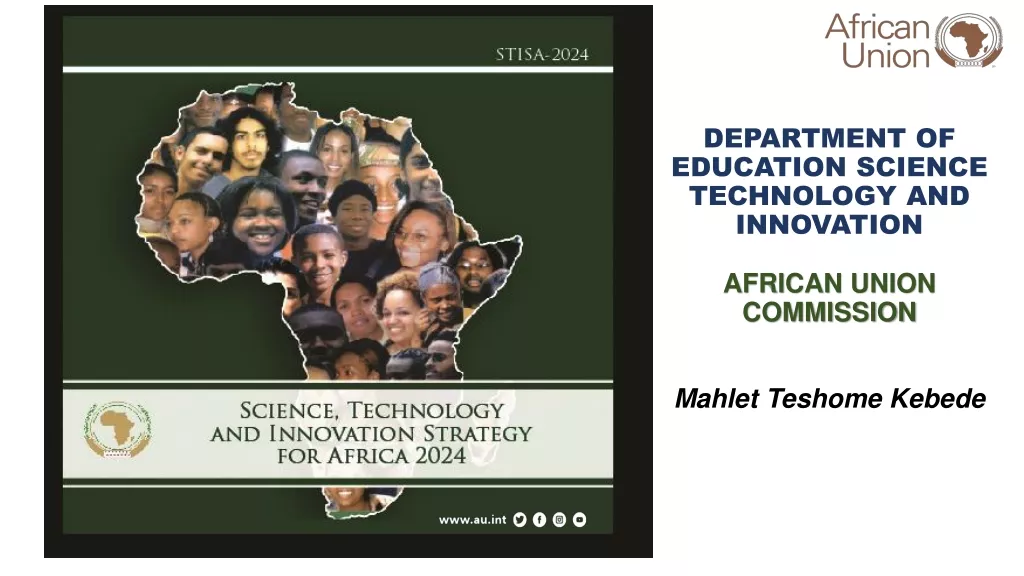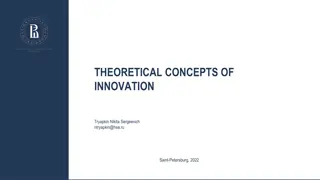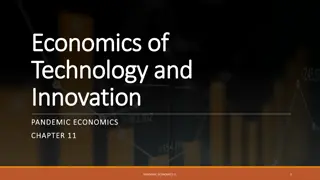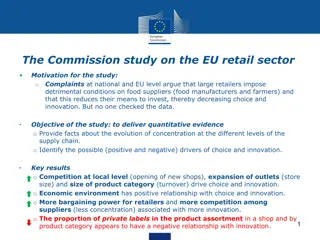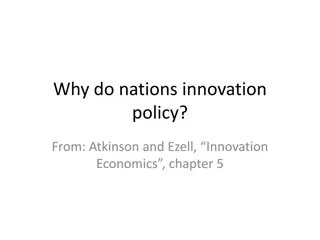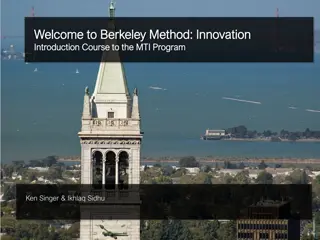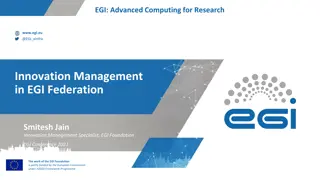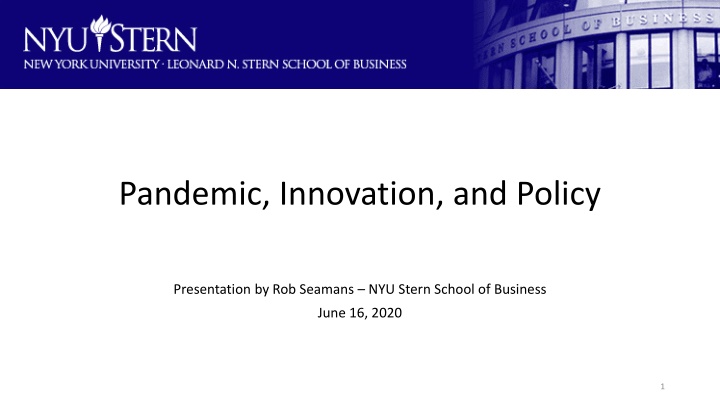
Innovation and Policy Implications Amid Pandemic Challenges
Explore the impact of the pandemic on innovation and policy with insights from Rob Seamans of NYU Stern School of Business. Discover short-term disruptions to innovation, long-term shifts in R&D focus, and potential new areas for innovation like e-commerce and telemedicine. Delve into policy issues surrounding broadband internet access and income disparities. Gain valuable perspectives on navigating the evolving landscape of innovation and policy in response to current challenges.
Uploaded on | 1 Views
Download Presentation

Please find below an Image/Link to download the presentation.
The content on the website is provided AS IS for your information and personal use only. It may not be sold, licensed, or shared on other websites without obtaining consent from the author. If you encounter any issues during the download, it is possible that the publisher has removed the file from their server.
You are allowed to download the files provided on this website for personal or commercial use, subject to the condition that they are used lawfully. All files are the property of their respective owners.
The content on the website is provided AS IS for your information and personal use only. It may not be sold, licensed, or shared on other websites without obtaining consent from the author.
E N D
Presentation Transcript
Pandemic, Innovation, and Policy Presentation by Rob Seamans NYU Stern School of Business June 16, 2020 1
Short term: negative shock to innovation Temporary closure of R&D labs and research facilities will slow the pace of scientific discovery. Heterogeneous effects samples for some research were frozen for future use; other research requires fresh/live specimen Decline in demand across industries will likely lower firms propensity to innovate Lots of research on the link between innovation and market demand (Cohen, 2010; Schmookler, 1966) New York Times March 2020
Longer term: innovation in new areas The rise of fracking and US oil independence was largely motivated as a response to the 1970s oil embargo (NYT) Wars and the accompanying increase in war-related expenditures can shift the trajectory of R&D spending towards defense-related technologies and industries (Moretti, Steinwender, & Van Reenen, 2019).
Many potential new areas for innovation For additional insight, see NYU Stern Management Department research briefs on innovation (link) Remote learning (today is a case in point) E-commerce More detail next slide Telemedicine Google trends
Deeper dive: E-Commerce Shift from in person retail to online purchase (NBER WP) Requires innovations in fulfillment, delivery, returns Less time shopping means more time for other activities, e.g., local coffee shop visits
Internet access varies by income
Internet access policy options Policy 1: Allow cities to provide their own broadband Many states have laws restricting or prohibiting community broadband Policy 2: Expand and reform Lifeline Current policy: $9.25/month for low income households. Policy 3: Tax break for Internet from home Tax break for businesses that pay for their employees Internet, or Tax credit for individuals who would claim it when filing their own taxes More detail in my Forbes article
Pandemic, Innovation, and Policy Presentation by Rob Seamans NYU Stern School of Business June 16, 2020 9




